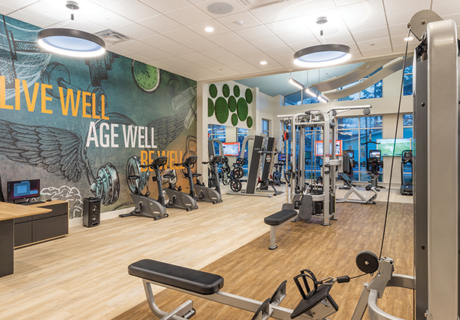The Spark: Mitchell S. Elliott

At the age of 10, I told my parents that I wanted to be an architect when I grew up. I had just been exposed to Legos in the late ’60s and all I wanted to put together were houses and buildings. (X-wing fighters hadn’t been created yet.) However, growing up on a farm in central Nebraska limited my exposure to the career of architecture. Fortunately, my family didn’t discourage me from pursuing that dream.
Fast forward to college, where I graduated from the University of Nebraska College of Architecture with a mindset that I could design anything. My early career, which included working at Ambrose Jackson & Associates, Purdy & Slack Architects, and RDG Planning & Design, involved designing shopping centers, office buildings, restaurants, sporting venues, and educational environments. I had achieved partner status at RDG Planning & Design, but the time commitment was taking a toll on my family.
An acquaintance at Vetter Health Services asked me if I knew anyone who would be interested in joining their company as an in-house architect. Even though I had no experience in senior living and absolutely no knowledge of skilled nursing, I began considering the offer myself, thinking “If I give this three years, it probably wouldn’t ruin my architectural career.” (Yes, I was a prideful young man.) Although many of my associates and peers thought I was crazy for “leaving the profession,” I decided to go for it and landed the job. I had no idea the impact that my “three-year experiment” would have on me, both personally and professionally.
As I embarked on this new journey, I wanted to fully immerse myself into the world in which I was designing. I went through “new administrator” orientation to help me better understand the day-to-day operations inside a care community. During the first couple of years on the job, I spent time in our skilled nursing kitchens, laundry rooms, and therapy gyms. I even experienced a bath in one of the lifts over the tubs as part of my efforts to understand residents’ lives. Little by little, I gained an appreciation for seniors and how the design of their environments could impact the quality of their lives.
It was also during my first year at Vetter Health Services that I heard a presentation on senior living design by a “crazy person” full of passion, sarcasm, and wonderfully challenging ideas—environmental gerontologist Lori Hiatt. Through my friendship with Lori, I joined her cause in creating life-changing environments for seniors. Her influence was one of the many contributors to my working for nearly a quarter-century at Vetter Health Services (so much for my three-year experiment).
Still, it took six years until I had my epiphany about this industry. In the late ’90s, I had the opportunity to replace an archaic medical-model nursing home, which was infamous for its six-bed wards and walk-through bathrooms, with one of the first connected households for skilled nursing. As we moved residents from the old building into their new home, the residents and their family members were crying … and so was I. Never had I experienced that type of emotion designing shopping centers or office buildings. I realized that we were impacting the lives of older adults in such a positive way and that nothing else could compare. I was hooked.
I spent 24 years at the Vetter organization, where I had the opportunity to develop and create “real architecture” for aging residents and their care-giving teams. In 2017, I took the next step in my journey and rejoined RDG to help lead the firm’s senior living market, coming full circle in my journey. I believe I’m a better architect today because I stepped out of my comfort zone, took a chance, and experienced the world of senior living from the resident’s perspective.
Mitch Elliott is a principal at RDG Planning & Design in Omaha, Neb. He can be reached at melliott@rdgusa.com.
Environments for Aging‘s The Spark column shares industry members’ personal accounts of the moments, people, or projects that inspired them to dedicate their careers to improving environments for seniors. If you’re interested in sharing your story, contact Executive Editor Anne DiNardo at anne.dinardo@emeraldexpo.com.




